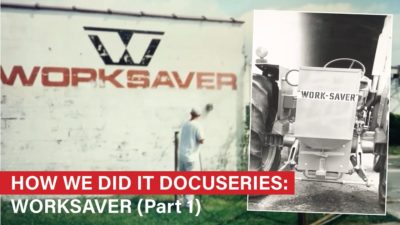Our first print issue of 2018, which should already be in your hands, includes our annual Dealer Business Trends & Outlook Report. Hopefully, the report echoes what you are seeing in your market — that 2018 should be a strong year for rural equipment revenues and better than what dealers logged last year.
In our annual survey, more than 64% of dealers across North America forecast total revenue to be up 2-8% this year. That’s significantly up from last year when about 50% expected revenue growth in the 2-8% or more range and even up from the 60% of dealers who forecast that level of growth for 2016.
Forecasts are also good for aftermarket revenue, which typically brings better margins. More than 63% of dealers expect aftermarket revenue to grow 2-8% or more. That compares with about 52% of dealers who expected that growth in 2017 and back to the similar percentage who forecast that for 2016.
Those good forecasts are a solid head start on a successful 2018, but forecasts will only take a dealership so far. What matters is how dealers make the most of these opportunities.
One dealer brings to light a dilemma among all this optimism. Here’s his take on the situation:
“The rural lifestyle industry is moving ahead and, with that, the sizes of dealerships are growing. The business of running a dealership is becoming more complicated as rural equipment manufacturers are now offering high horsepower tractors, construction and hay tools. The management of people and processes is also changing.
Many owners are not able to keep their dealership ahead of the curve. This has nothing to do with age, but more to do with owner skill sets. This frustrates manufacturer partners, employees and, ultimately, customers, who will find someone who can meet their needs.
What is a gentle way to tell an owner that his skill set is not to the level needed to keep a dealership moving ahead? These dealers are working themselves into failure without realizing it, and losing many years of equity. It’s similar to putting a lobster in cold water and then turning on the heat.”
I plan to ask our experts about this dilemma for an upcoming “Fix My Problem” feature, but I wanted to start with you dealers first. You’re seeing this scenario when you talk to fellow dealers at manufacturer meetings — and you may even be experiencing this. What is the path to resolution? As one example, Big Valley Tractor’s is adding outside professionals to its management team. The Stockton, Calif.-based dealership is RLD’s 2017 Dealership of the Year in the single-store category.
What ideas do you have for 1) How to tell a dealer that their skill set may be putting the business in jeopardy and 2) How do you work to make sure ownership and management have the necessary skills and vision to adapt to the changing and growing rural lifestyle segment?
Email or call me with your thoughts, lwoolf@lessitermedia.com or 316-648- 3717.





Post a comment
Report Abusive Comment